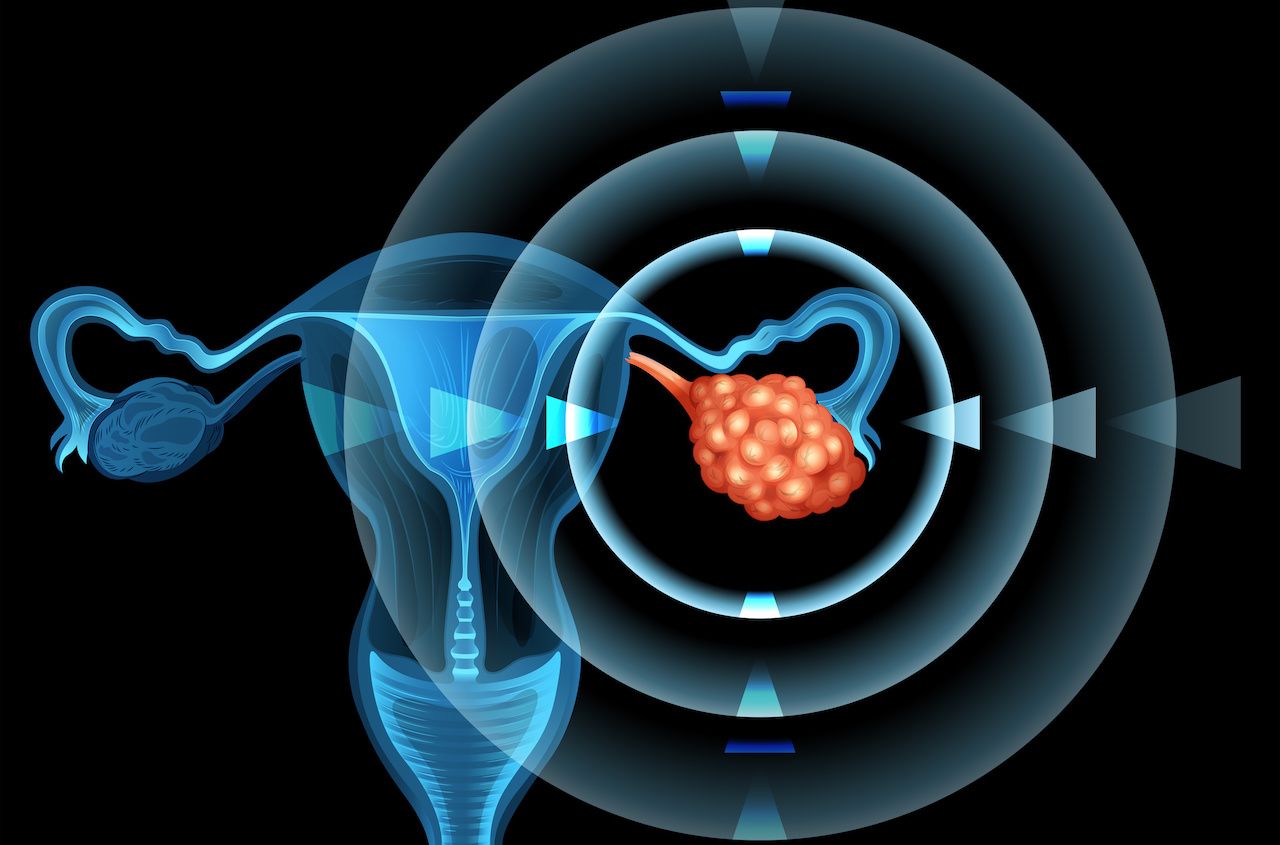- Center on Health Equity & Access
- Clinical
- Health Care Cost
- Health Care Delivery
- Insurance
- Policy
- Technology
- Value-Based Care
15-Year Analysis Shows Decrease in Ovarian Cancer Incidence, Incidence-Based Mortality
The overall decline was mainly driven by decreased incidences of epithelial cancers in the ovaries, fallopian tubes, or peritoneum, as well as a decrease in the number of patients diagnosed with epithelial cancer, especially in advanced stages.
A study published in Gynecologic Oncology found decreases in the incidence and incidence-based mortality from ovarian, fallopian tube, and primary peritoneal cancer over a 15-year period. The overall decline was mainly driven by decreased incidences of epithelial cancers in the ovaries, fallopian tubes, or peritoneum, as well as a decrease in the number of patients diagnosed with epithelial cancer, especially in advanced stages.
The study used age-adjusted ovarian, fallopian tube, and primary peritoneal cancer incidence and incidence-based mortality data from the US Surveillance, Epidemiology, and End Results (SEER) 17 database from 2000 to 2019. The authors noted that what has traditionally been referred to as ovarian cancer now encompasses ovarian, fallopian tube, and primary peritoneal malignancies. Fallopian tube and peritoneal malignancies are epithelial and can be managed similarly to epithelial ovarian cancer, but ovarian cancer can be epithelial, stromal, or germ cell. Diagnosis, prognosis, and treatment all differ depending in histological origin, making these subtypes important to the analysis, the authors noted.
The SEER 17 database identified 186,330 new cases of ovarian, fallopian tube, and primary peritoneal cancers from 2000 to 2019, as well as 56,479 deaths related to these diagnoses. The age-adjusted incidence of all ovarian, fallopian tube, and primary peritoneal cancer subtypes showed a downward trend from 15.5 to 12.1 cases per 100,000 women from 2000 to 2019 (average annual percent change [AAPC], −1.4%; P < .001). From 2015 to 2019, the decline was steeper, dropping from 13.4 to 12.1 cases per 100,000 women (annual percent change [APC], −2.4%; P < .001).
Similar trends were seen in cancers originating in the ovary and primary peritoneal cancer, with the age-adjusted incidence cancers originating in the ovary dropping from 14.2 to 9.9 cases per 100,000 women between 2000 and 2019 (AAPC, −2.0%; P < .001), with a more substantial decline from 11.6 to 9.9 cases per 100,000 women from 2015 to 2019 (APC, −3.4%; P < .001). In primary peritoneal cancer, the incidence declined from 0.77 to 0.70 cases per 100,000 women between 2005 and 2019 (APC, −1.1%; P = .004).
Ovarian cancer | Image credit: blueringmedia - stock.adobe.com

Conversely, there was a rise in fallopian tube cancer incidence from 0.42 to 1.33 cases per 100,000 women between 2015 and 2019 (APC, 8.8%; P < .001).
In all epithelial cancers overall, the incidence decreased from 12.2 to 10.0 cases per 100,000 women between 2004 and 2019 (AAPC, −1.2%; P < .001). This decrease was mostly driven by a reduction in patients diagnosed with distant disease or unknown or unstaged disease, as the incidence of localized and regional disease increased over this time period. The incidences of germ cell and stromal cancers did not statistically significantly change.
Additionally, there was a downward trend for high-grade epithelial disease from 8.0 to 5.5 cases per 100,000 women from 2000 to 2019, including a more substantial decrease from 6.4 to 5.5 cases per 100,000 women from 2016 to 2019. Incidence of low-grade epithelial cancers, on the other hand, remained stable throughout the study period.
Regarding incidence-based mortality, there was an overall downward trend across cancer types from 2004 to 2019, with a decreased from 6.9 to 5.3 deaths per 100,000 women per year (AAPC, −1.4%; P < .001). From 2007 to 2019, there was a steeper decline (APC, −2.3%; P < .001). A decline in incidence-based mortality from distant disease between 2010 and 2019 (APC, −2.5%; P < .001) and decline in unknown or unstaged disease from 2006 to 2019 (APC, −3.27%; P < .001) were largely responsible for the overall decline.
Across epithelial cancers, incidence-based mortality decreased between 2004 to 2019, dropping from 6.0 to 4.7 deaths per 100,000 women per year (AAPC, −1.2;, P = .006). The decline from 2007 to 2019 was sharper (APC, −2%; P < .001). Similarly to the trend seen in incidence, the incidence-based mortality from high-grade epithelial cancers decreased from 3.9 to 2.7 deaths per 100,000 women per year from 2006 to 2019 (APC, –1.2%; P < .05). Between 2017 and 2019, the decline was sharper, with incidence-based mortality decreasing from 3.4 to 2.7 deaths per 100,000 women per year (APC, −10.7%; P < .05). Low-grade epithelial cancers also showed a decline in incidence-based mortality (APC, −2.4%; P < .05).
“Alongside the decline in incidence, we see a similar trend in incidence-based mortality for all ovarian cancers. This trend seems to be driven primarily by a decline in incidence-based mortality from distant disease,” the authors wrote. “The observed decline in mortality could be due to fewer cancers being diagnosed at an advanced stage with improved early detection and improved uptake of risk reducing surgery. Improvements in the surgical and medical treatments for these hard-to-treat cancers could also account for these improvements in mortality.”
Reference
Somasegar S, Reddy RA, Chow S, Dorigo O, Renz M, Karam A. Trends in ovarian, fallopian tube, and primary peritoneal cancer incidence, mortality, and survival: A 15-year population-based analysis. Gynecol Oncol. Published online February 7, 2024. doi:10.1016/j.ygyno.2024.01.034
